Best road bikes under $1000: our pick of the bunch in 2025
You can still find some great road bikes that hover around the $1000 barrier
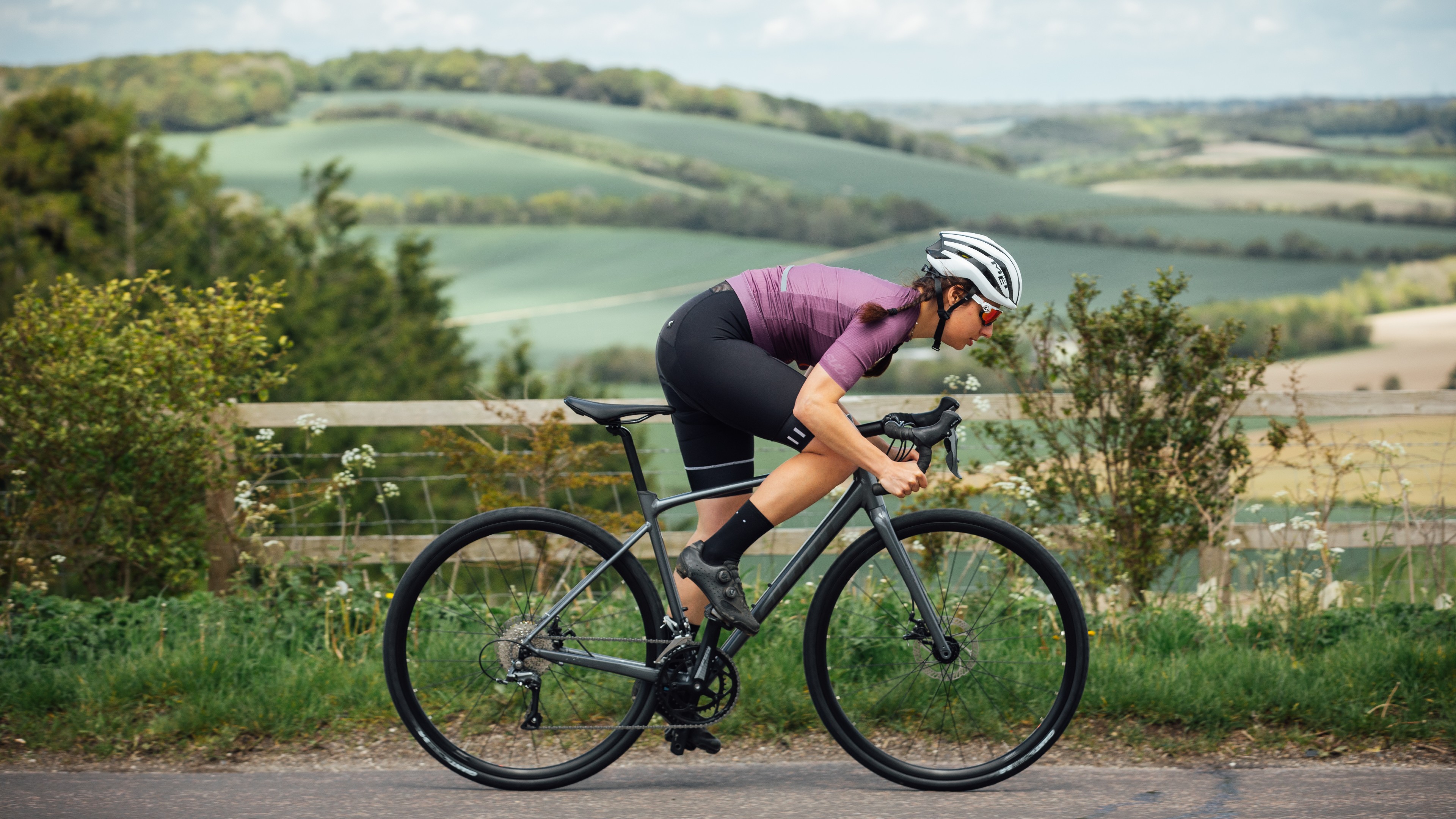

If you're new to road cycling or working with a tight budget, finding an affordable road bike isn't easy. The $1000 bracket used to have plenty of options but rising prices has seen this shrink somewhat.
However, we've still managed to find some great options in and around that competitive price tag, proving that a entry-level road bike for under four digits is still possible.
We've selected a range of bikes that cover a variety of riding styles, from those suited to fast-paced rides to those that are more adaptable, allowing you to use them for the daily commute or to tackle some light off-road tracks. There's also a guide on what to look for when shopping for a road in this price range.
If you're still left undecided about the right bike for you, we also have guides to the best budget road bikes , the best budget gravel bikes and the best commuter bikes.
The quick list
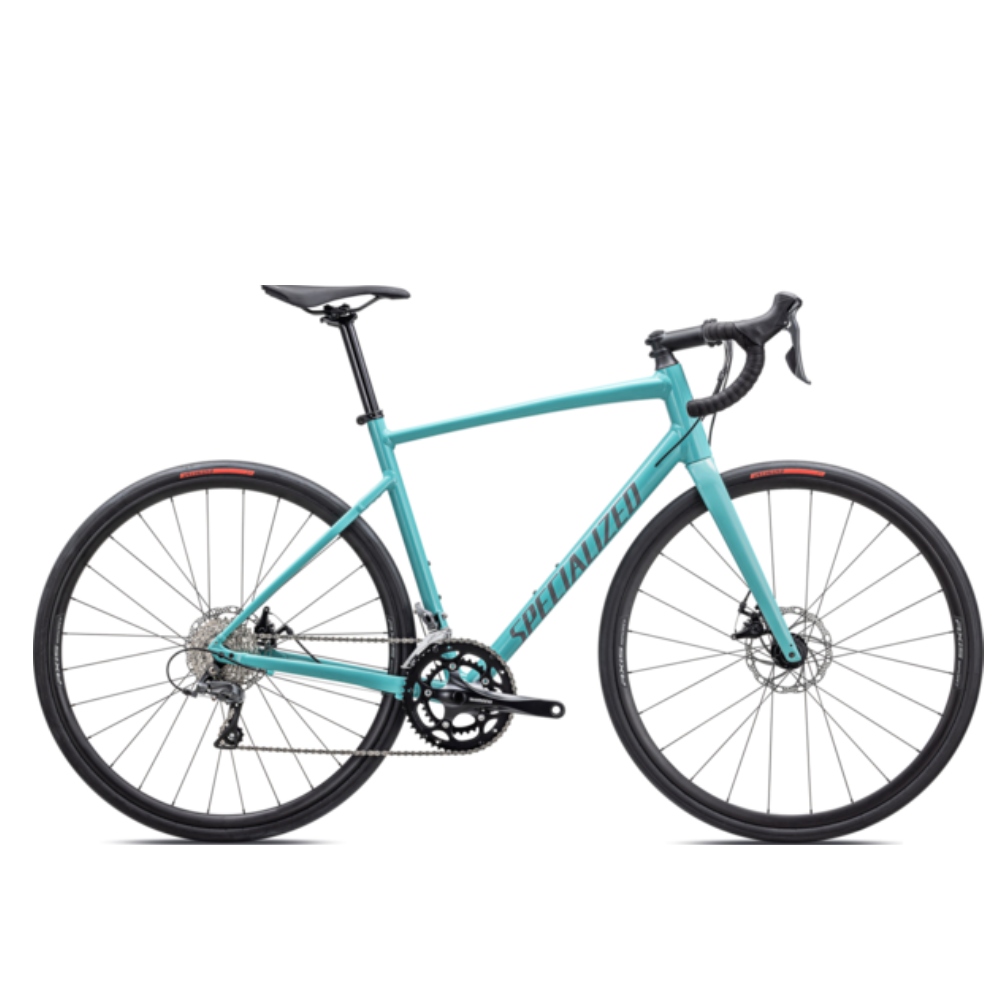
The Allez delivers a thoroughly modern and adaptable frameset complete with clearance for 35mm tyres as well as mounts for fenders and a rack.
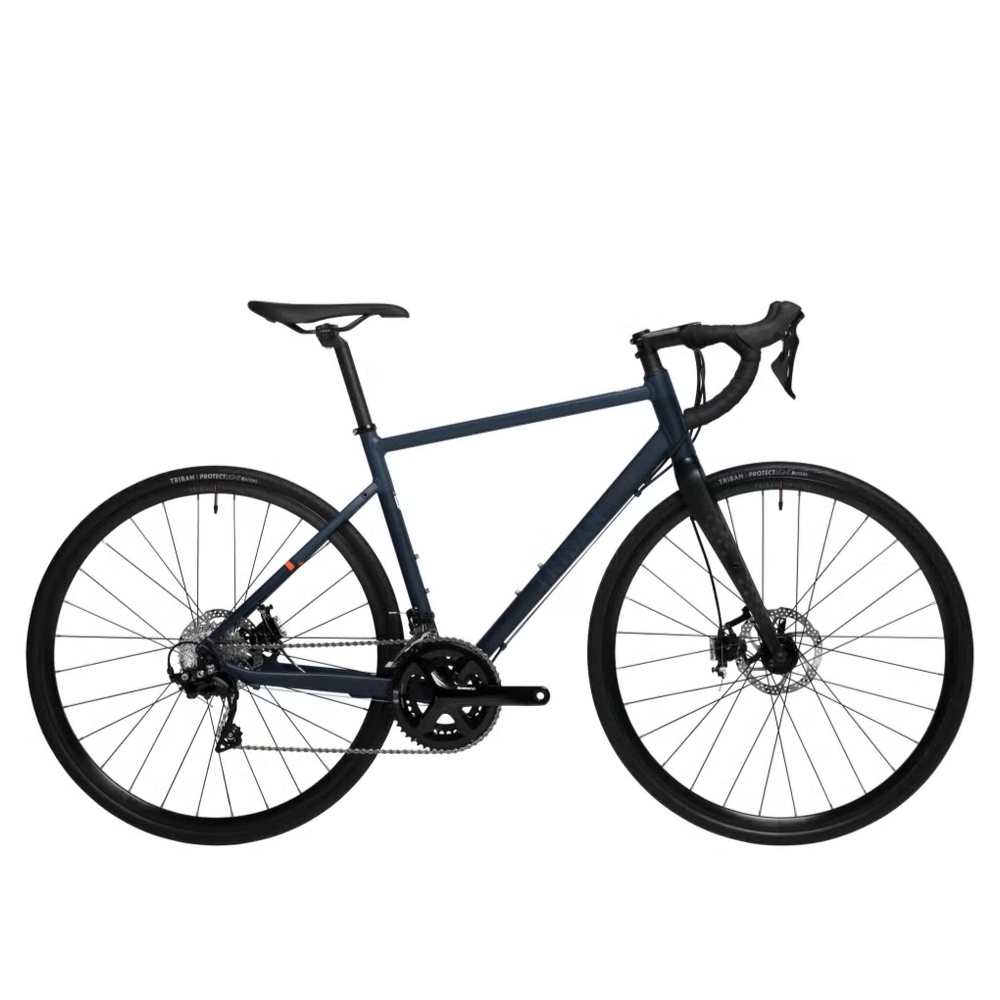
While not a complete 105 groupset, at this price point its impressive nonetheless. The frameset is versatile too, with disc brakes, plenty of mounts and clearance for 36mm tyres.
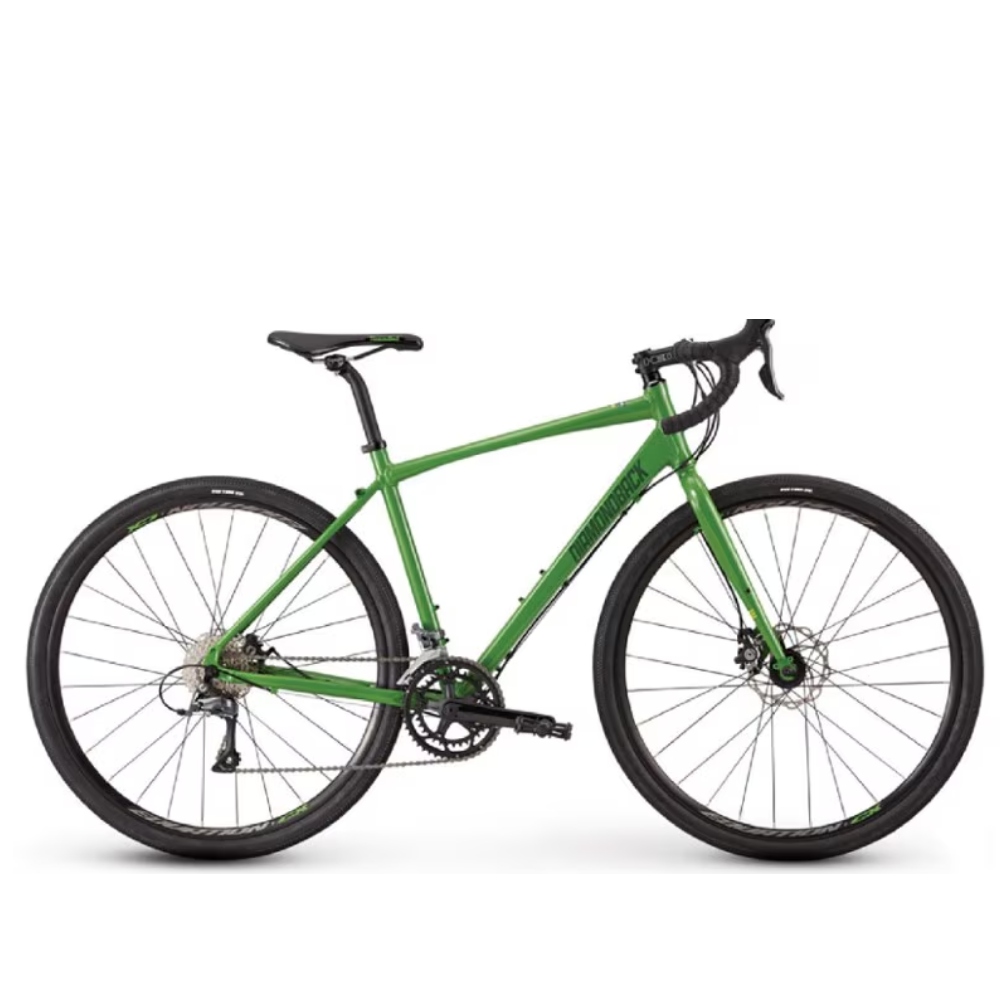
With 38mm tyres, disc brakes and mounts for fenders and a rack, the Haanjo 2 is solid all-rounder that could handle the daily commute and light gravel as well long rides on the road.
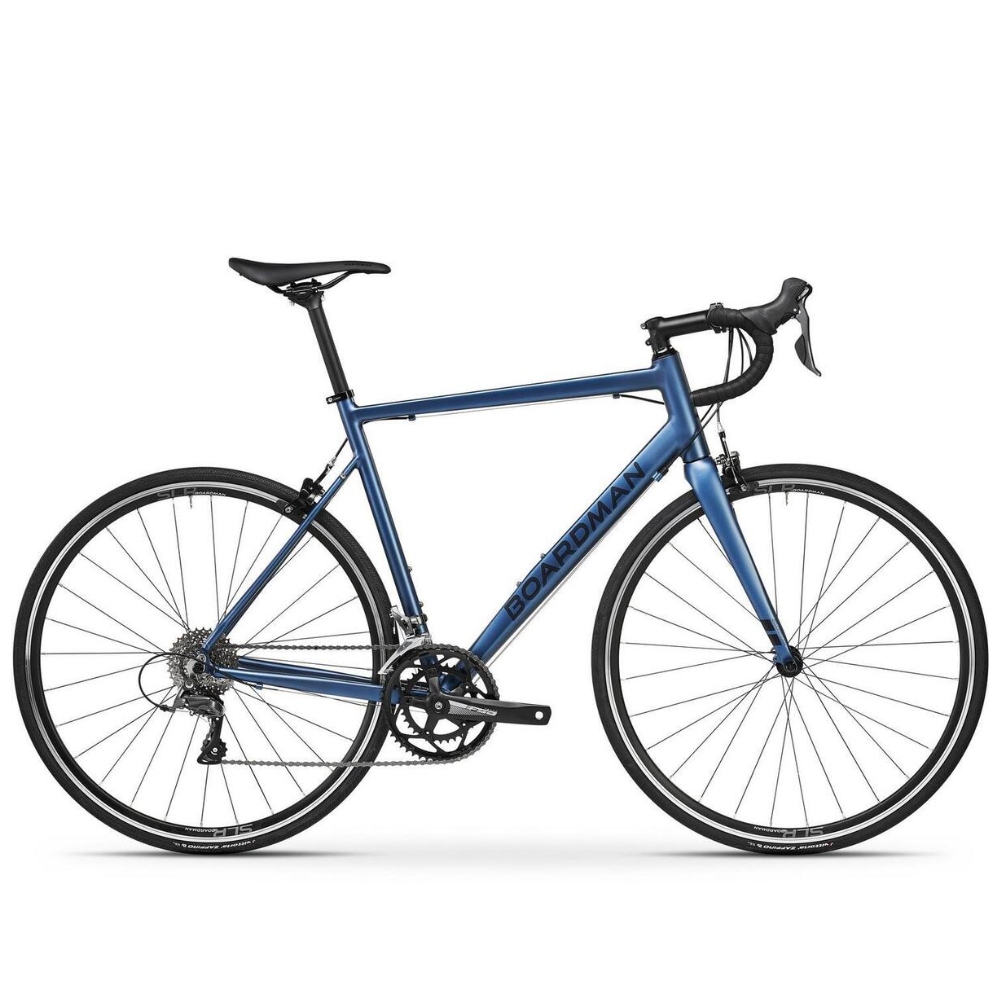
The combination of classy frameset and Shimano drivechain components makes the SLR 8.6 great value. Yes, it does have rim brakes but for a road bike on a budget it's hard to beat.
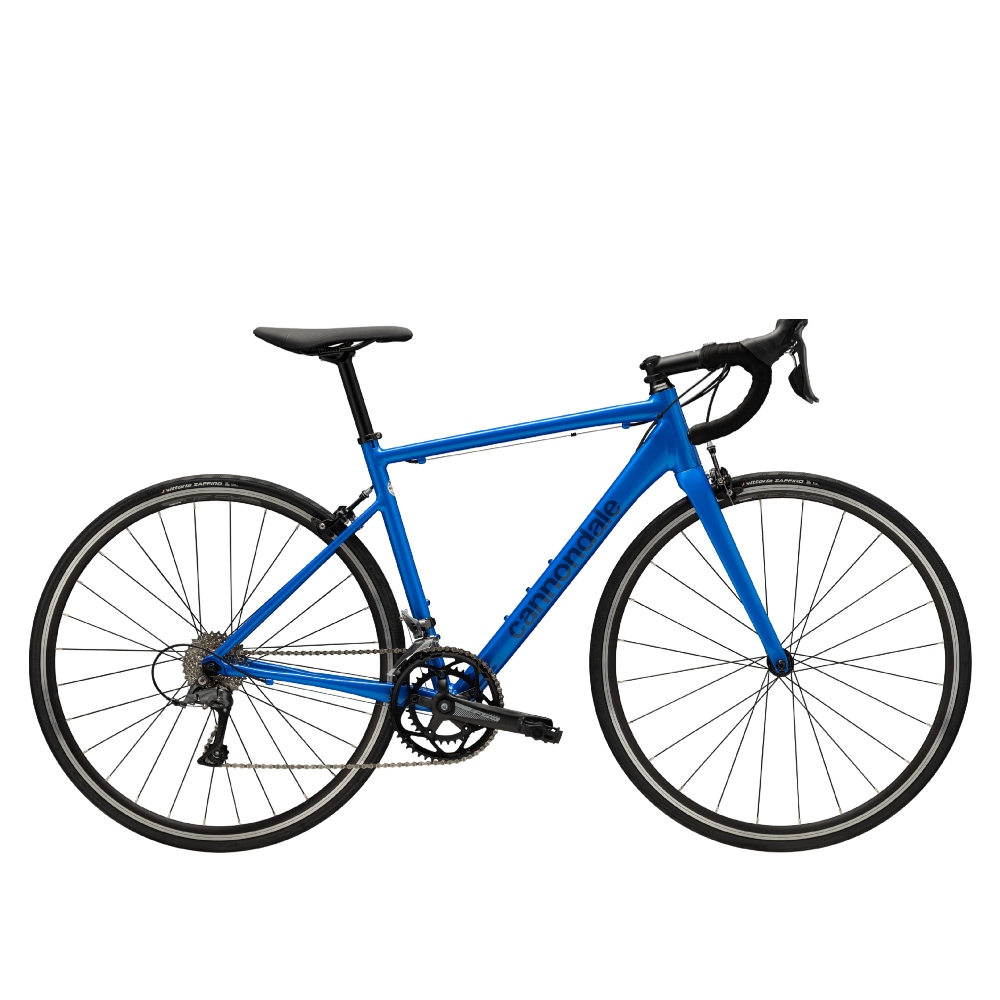
A great entry-level road bike, the Optimo delivers stable handling and comfortable riding position alongside a set of unflashy but reliable components.
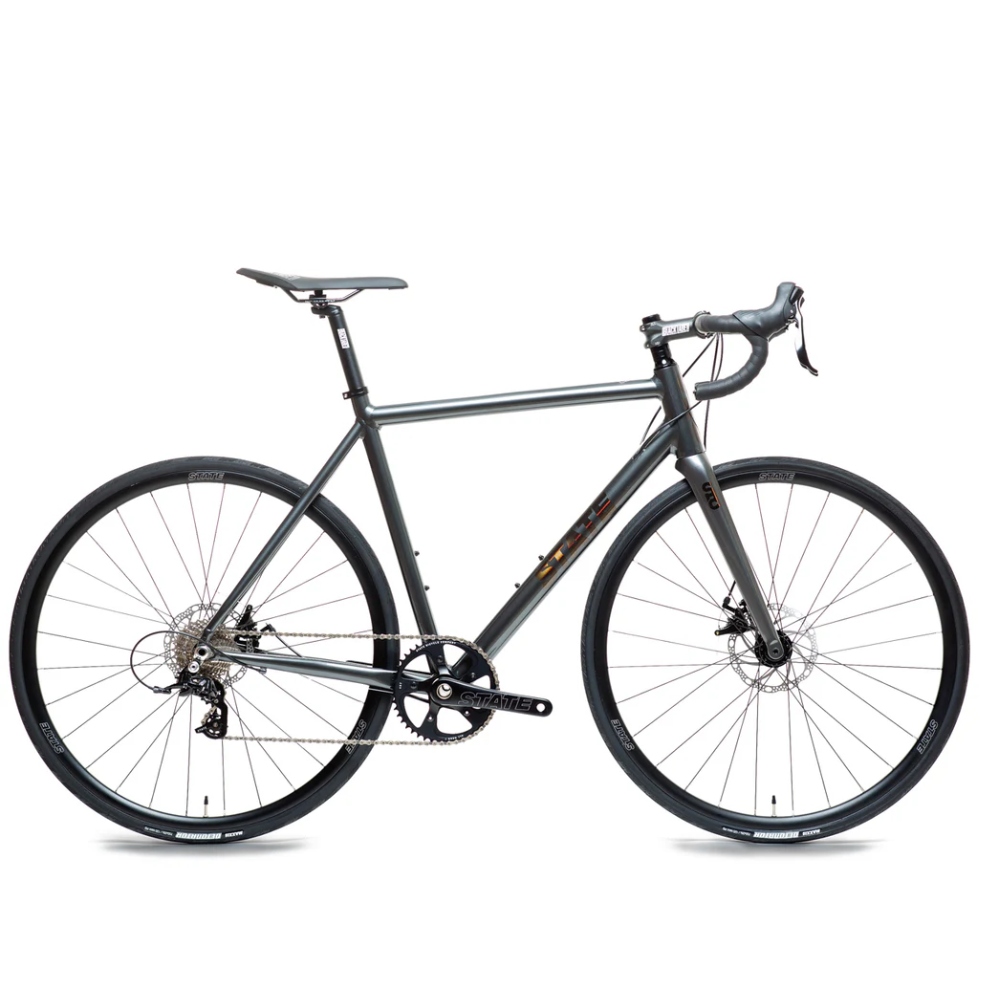
The 1x drivechain and Sram-style shifting makes this a straightforward operator that's well-suited to city cycling, commutes and rides that aren't over hilly.
Best road bikes under $1000
Best overall
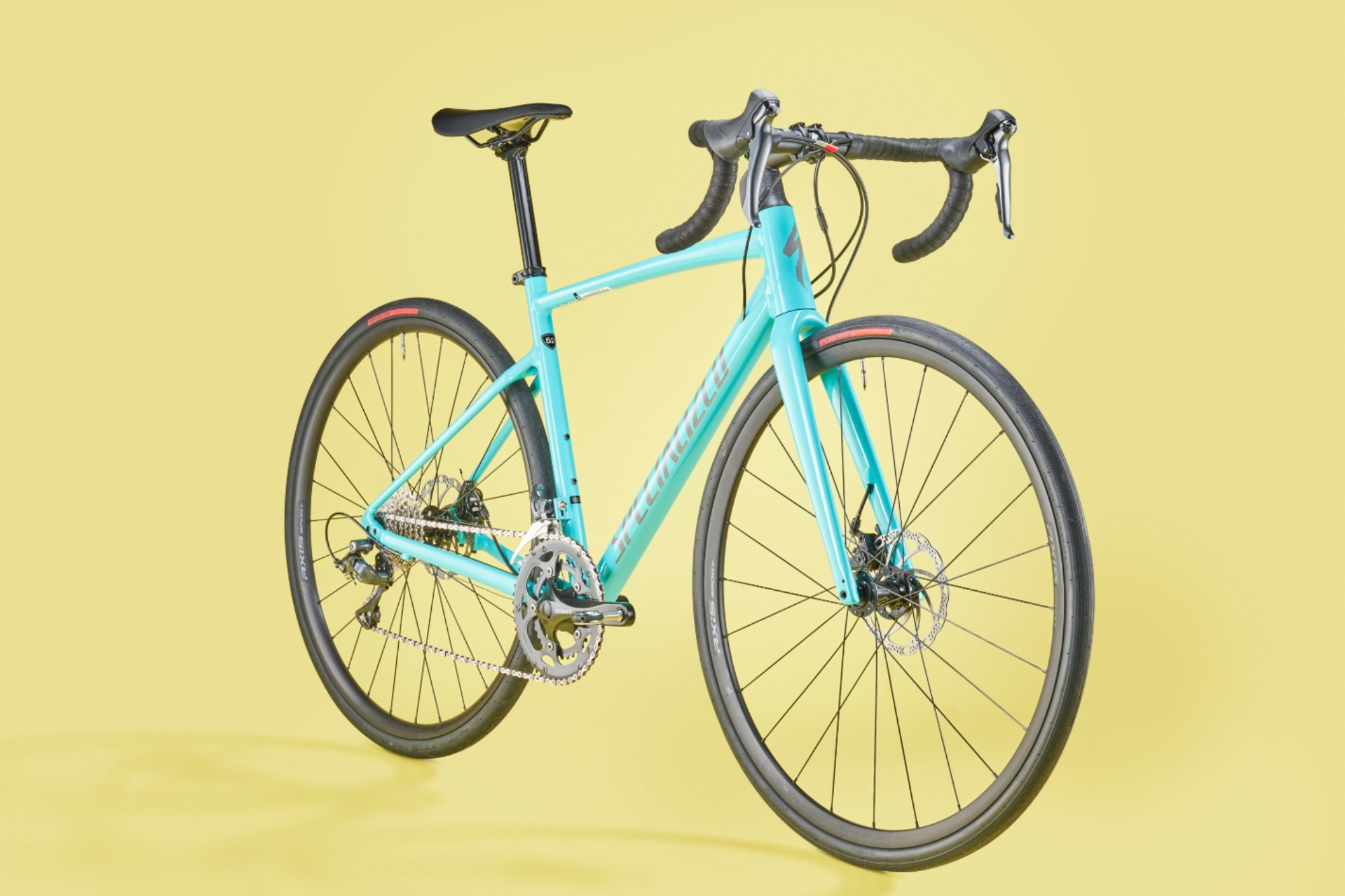
Specifications
Reasons to buy
Reasons to avoid
The Allez is nothing short of an icon and one of the best selling road bikes of all time. It’s been a staple of the Specialized line for decades and with good reason. At the entry level point it gives you a stylish and adaptable frameset that’s worth upgrading as you and your cycling progress.
We appreciated the sensible frame geometry; more relaxed, with longer chainstays and a slacker head angle it’s comfortable and stable, without ever being dull. Add in the 35mm tyre clearance and the mounts for fenders and a rack and you have an adaptable bike that’s well-suited to differing terrain and requirements.
That said, when we lowered the stem, the Allez responded in kind, turning from the comfy mile muncher into something more agile and speedy.
At this price point the components are decent enough but have their limitations; the 8-speed Shimano drive chain means there are some pretty sizable jumps between gears, while the mechanical disc brakes lack the stopping power of hydraulics. But as mentioned, these are parts that can be upgraded as and when, with the Allez frameset deserving of the attention.
Read more: Specialized Allez full review
Best with 105
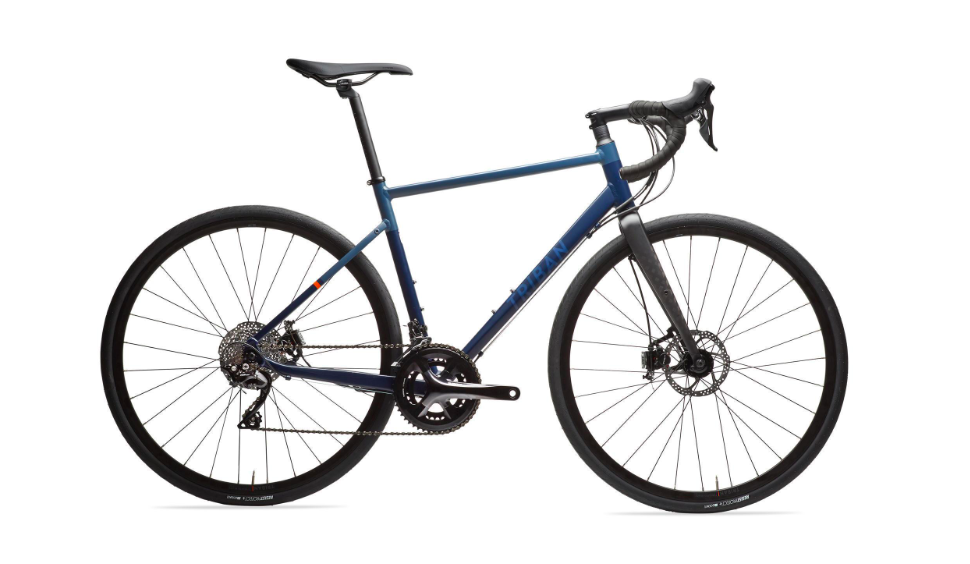
2. Triban 520 road bike
Specifications
Reasons to buy
Reasons to avoid
Rebranded and redesigned, the aluminium frame now comes with a carbon bladed fork. The Triban 520 has also switched to disc brakes in the form of TRP's well regarded HY/RD mechanical offerings. And amazingly, for a bike of this price, you also get Shimano 105.
The frame's geometry places the 520 clearly in the endurance/commuter/light tourer camp. Think generous stack height and shorter top tube. If you're looking to get 'long and low' then this probably isn't the bike for you. However, if you favour comfort and stability over speed and need a bike that can handle the trifecta mentioned above then the 520 is well worth further consideration.
Its credentials as a solid all-rounder are deepened by both the tyre clearance and the rack and mudguard mounts. The bike comes equipped with 28mm tyres. However there's room for up to 36mm of rubber should you want to hit the bridleways or dirt roads or fancy attempting an audax ride or two when comfort is paramount. Add guards (fenders) and a pannier rack and the 520 is ready for daily commute duties or some multi-day touring. Versatile indeed.
As mentioned earlier the bike's greatest asset might just be that 105 groupset. However it's worth noting that this isn't a full 105 set-up. To help keep costs down Decathlon has opted for a Shimano RS510 chainset and a Microshift cassette. While they'll add a little weight they shouldn't adversely affect performance. As for the gearing you get a compact 50/34t chainset paired with an 11-32t cassette. The result is a decently low gear that helps negate some of the bike's weight when climbing the steep stuff.
Best all-rounder
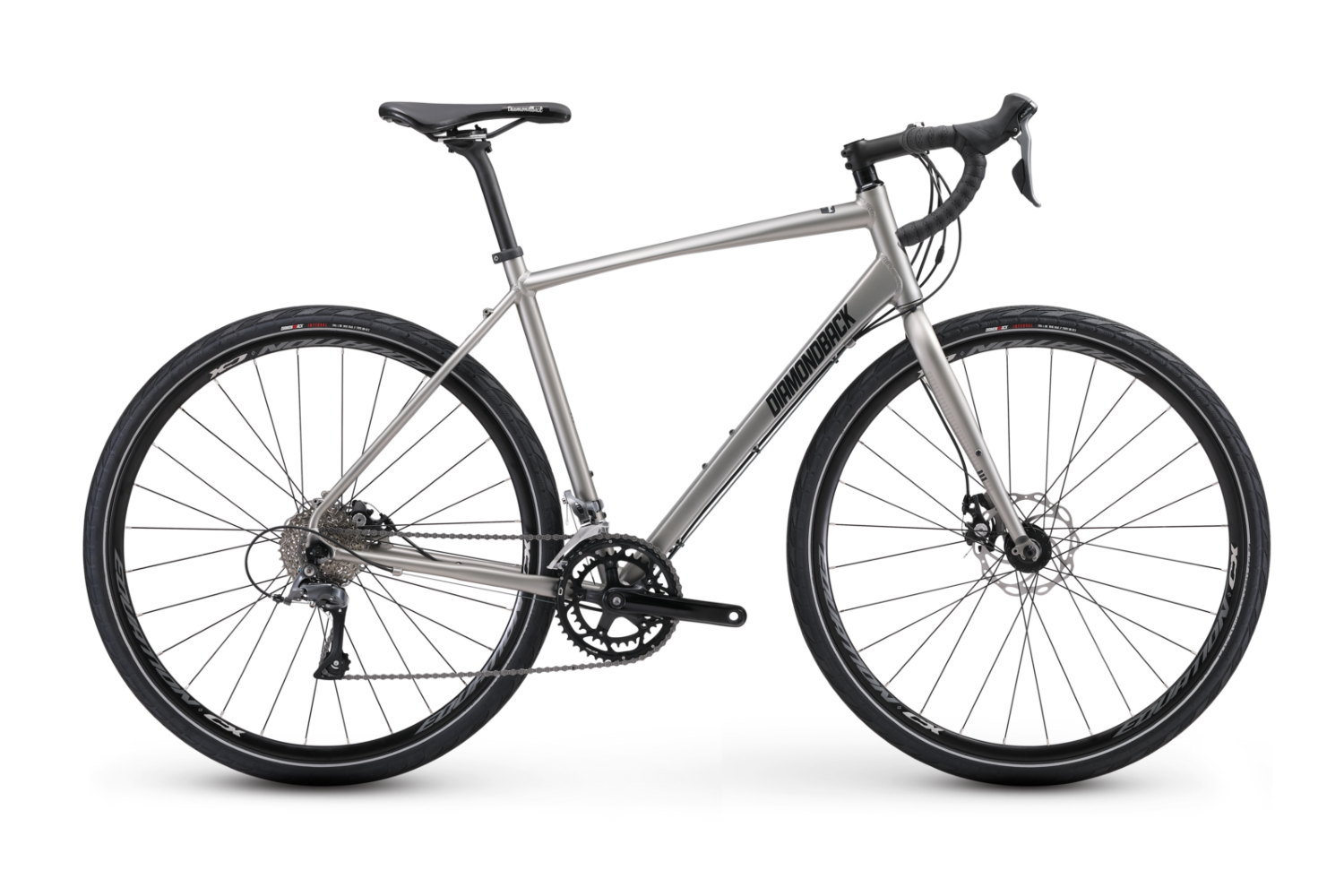
3. Diamondback Haanjo 2
Specifications
Reasons to buy
Reasons to avoid
A recommendation from one of our trusted US testers, the Diamondback Haanjo offers something a little different when compared with the pure road bikes in this list.
Being a gravel/adventure bike, the Haanjo will roll smoothly on the road but also comes with 38c tyres (or, tires) which will cushion out the bumps for off-road gravel rides.
In fact versatility is a constant theme with the Haanjo. The frameset, made from fully butted 6061 aluminium, features front and rear rack mounts as well as mudguard, (or fender) eyelets. This makes it well suited for light touring, commuting and winter training rides. This versatility is reflected in the generous stack height, the slack-ish headtube angle and the long chainstays, all of which point to a stable and comfortable ride.
The wide tyres and more rugged frame - with a steel fork - do naturally boost the weight but the Haanjo comes with a sub-compact 46/34t chainset and an 8-speed 11-32t cassette to help you get up the steeper climbs. Shifting comes courtesy of Shimano Claris while stopping is left to Tektro and its flat-mount mechanical disc brakes. By using the newer flat mount standard Diamondback has made it straightforward to upgrade the brakes if required.
Best value
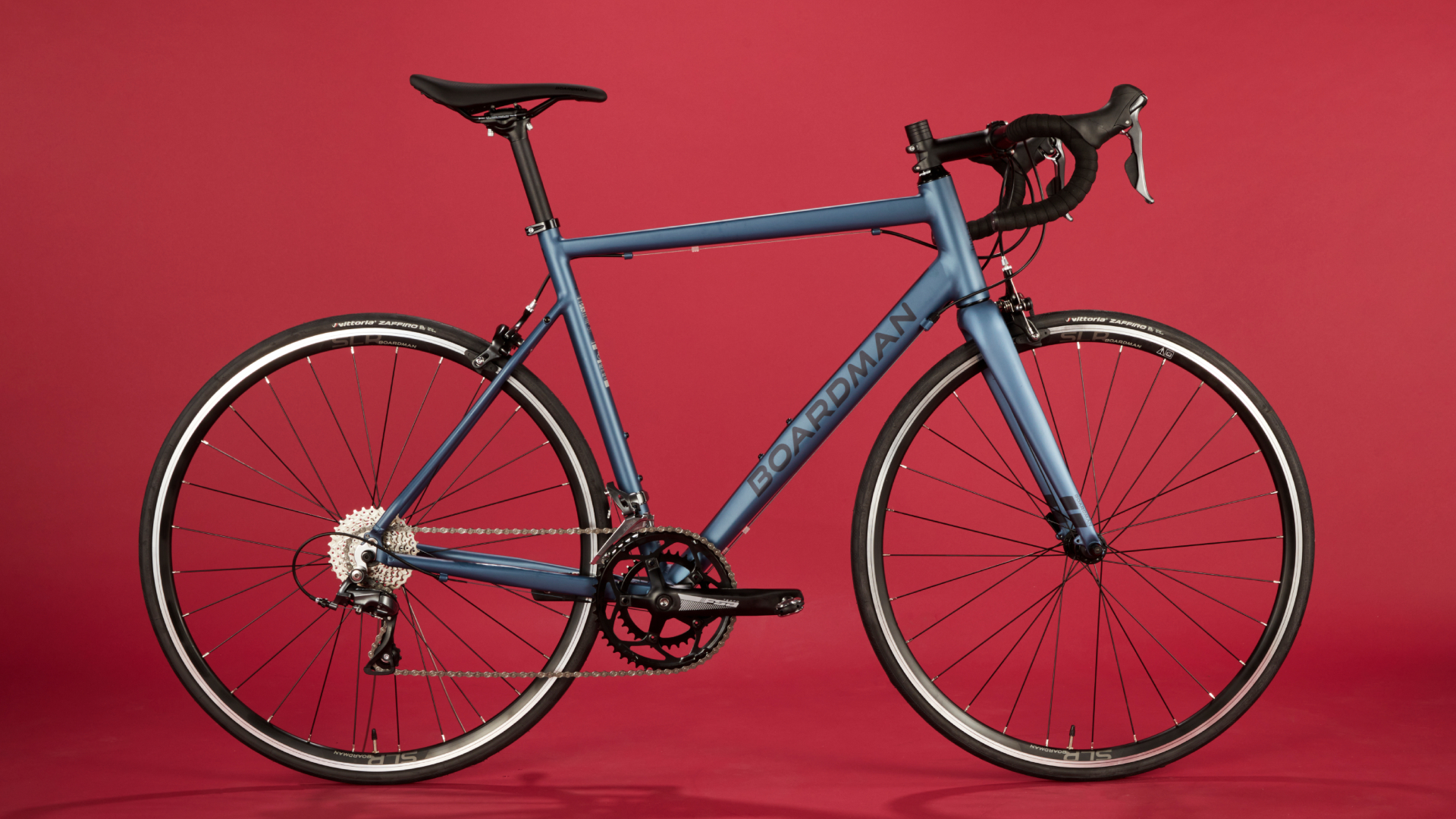
Specifications
Reasons to buy
Reasons to avoid
The Boardman SLR 8.6 is the brand's base model, but despite this its alloy frame has smoothed welds on the main tubes, almost giving it the look of carbon. The fork really is carbon.
Like the Pinnacle, there's a Shimano Claris groupset with the same gear ratios and Tektro rim brakes. Both have their deficiencies relative to more expensive options: the large jumps in gear ratios and the indifferent braking respectively.
But we were impressed by the frame's efficiency and the quite racy geometry, although there's a bit of road buzz on less smooth surfaces. The Boardman own-brand components work well and are comfortable. Boardman's wheels are tubeless ready if you want to upgrade the tyres.
Read more: Boardman SLR 8.6 full review
Best with rim brakes
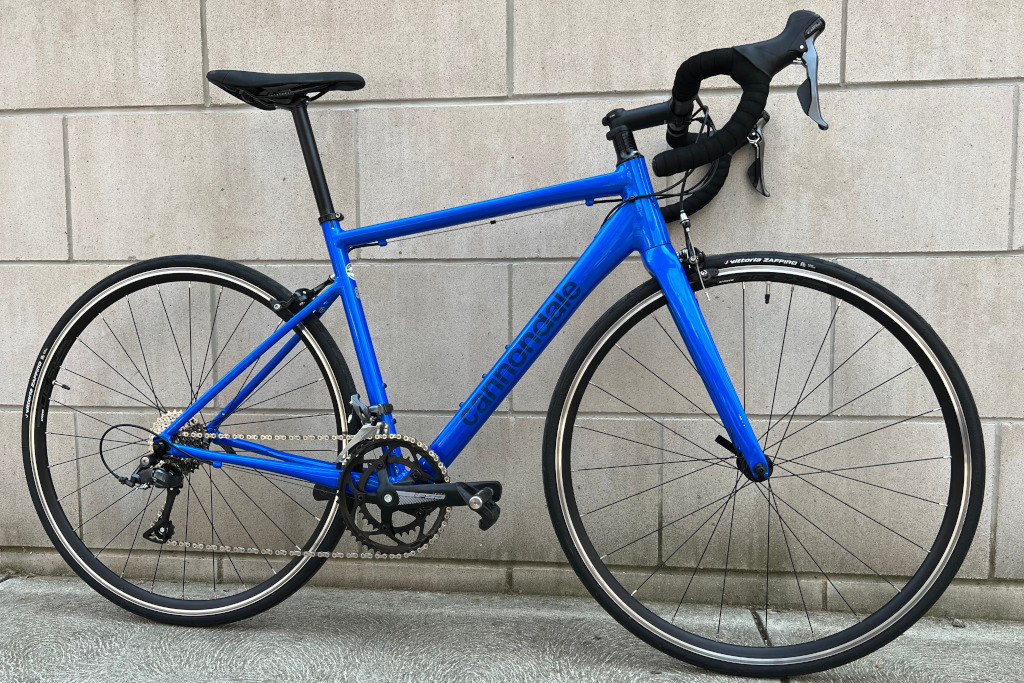
Specifications
Reasons to buy
Reasons to avoid
There’s a lot to like about the CAAD Optimo 4. The frameset is made using the US brand’s SmartForm tech, which makes for an alloy frame that’s reasonably light. It’s paired with a carbon fork, which helps to absorb the vibrations and make for a more comfortable ride. The dropped stays also add some compliance as well as give the bike a nice, modern look.
Sensible geometry means a reasonably high stack and shorter reach, well suited to new cyclists as well as those who enjoy more leisurely paced rides. We’d have liked to see a little more tyre clearance as is the trend these days, but the rim brakes mean that 25mm is about as wide as you can go.
As for those rim brakes, they might now seem a little antiquated given the almost universal popularity of disc brakes, but we found their performance to be sufficient.
To help keep the price down, the Optimo 4 is equipped with an 8-speed groupset comprising Shimano Claris shifters, mechs and cassette with a 50/34 FSA Tempo crankset. We found that the shifting was crisp throughout our review period but there were significant jumps between the gears, which at times played havoc with our cadence. However this might not be such an issue for less-experienced cyclists, especially if the bulk of the riding is done on flatter roads.
Best with a 1x
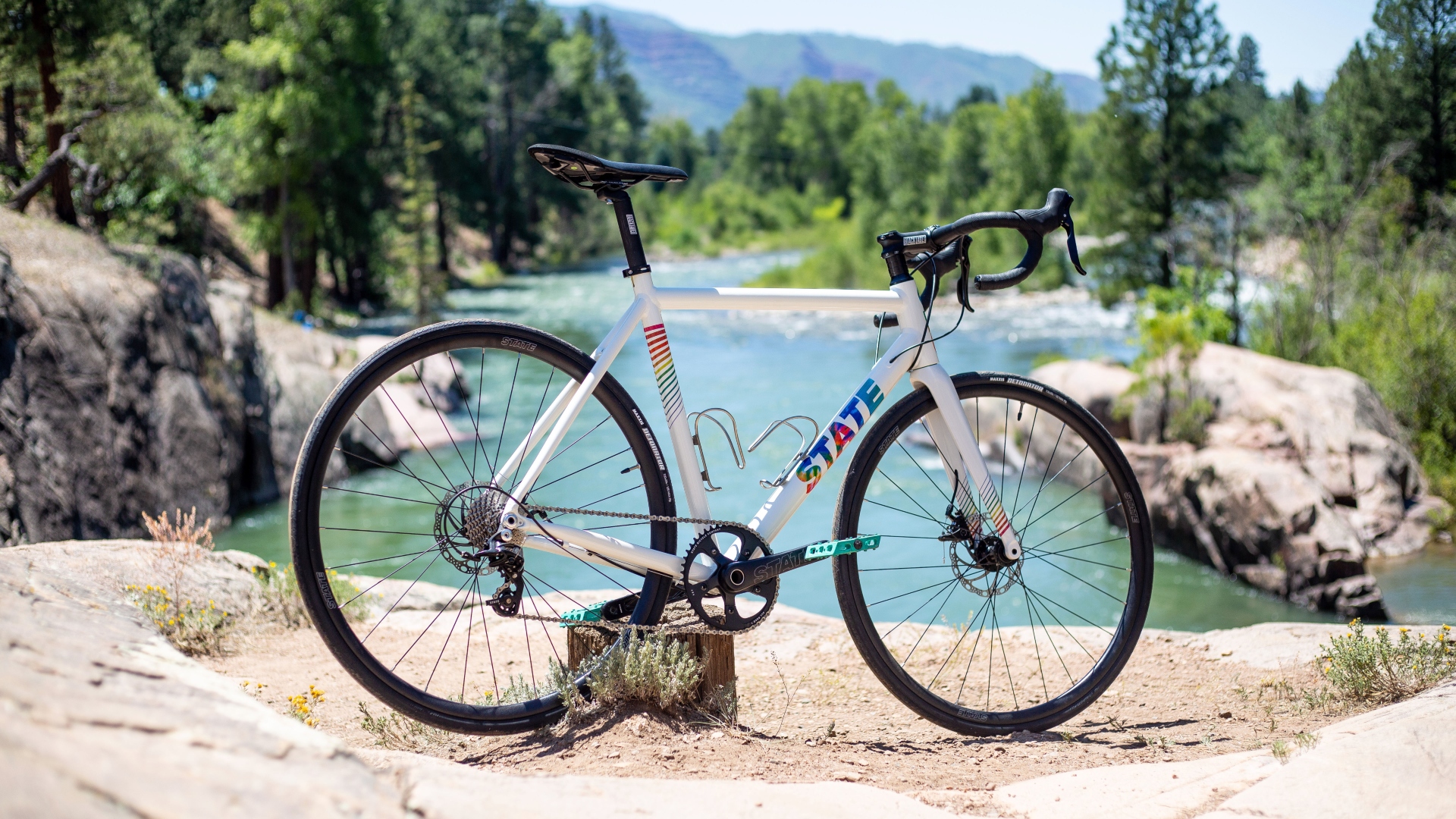
Specifications
Reasons to buy
Reasons to avoid
If you crave simplicity from your road bike, then the State Undefeated Disc could be right for you.
It features an 11-speed 1x groupset that uses a similar method of changing gear as Sram’s famous ‘double tap’ system. Here a single click inwards on the lever moves the chain down the cassette, while two clicks shifts it up. It’s a straightforward way to change gears but we did find that it took a little getting used to.
The 1x system, pairing a 46t chainring with an 11-32t cassette removes the need for a front mech, which is in essence one less thing to worry about when you’re out on the road. We found that the ratio was best suited to shorter, flatter rides, where we rarely found ourselves spinning out and or being forced to coast. However, if you live in an hilly environment you may need to swap out the chainring or cassette to something a little more climbing-friendly.
A stylish looking frame, complete with disc brakes and a carbon fork, the Undefeated proved to be fun to ride, with plenty of comfort considering the aluminum frame; in fact, this contributed to a quick and lively feel, rather than one that was overly harsh.
Read more: State Undefeated Disc full review
How to choose
At this price point you might be lucky to pick up a carbon frame if you go with a value retailer - such as those that sell direct only (like Ribble).
However, don't overlook aluminium frames with great spec, a lot can be done with alloy to keep the weight low, such as triple butting (where tubing is varied to three different widths to save weight where possible).
The groupset will often be Shimano Tiagra or Sora, but shop around a bit and you could find a dream boat with Shimano 105, which is considered the entry level race option.
The bike will likely come with entry level wheels, so look to upgrade these when you can as it'll make a big difference.
If you want to commute, look for mudguard and pannier rack mounts.
With so much choice available, your first step is to eliminate options that don't fit into your dream bike criteria.
One of the greatest differentiating factors between road bikes is the geometry. If you're looking for relaxed rides, perhaps planning endurance adventures or just don't want to put extra strain on your lower back then you probably want a bike with a relaxed geometry - these are often called endurance or sportive bikes.
If you think there's a chance you'll be disappearing down gravel paths or venturing into parks, then you'll want an even more relaxed stance and wide tyres along with disc brakes. These requirements take you into the gravel road or adventure bike category.
If however you think you might be looking at dipping a toe into racing - triathlon, road races - or want to hit a high average speed on your next sportive then a bike with a more aggressive geometry, or even an aero bike, will be on your shopping list.
Commuters will be looking for a model that comes with eyelets for mudguards and perhaps pannier racks - the same goes if you're considering taking your bike touring.
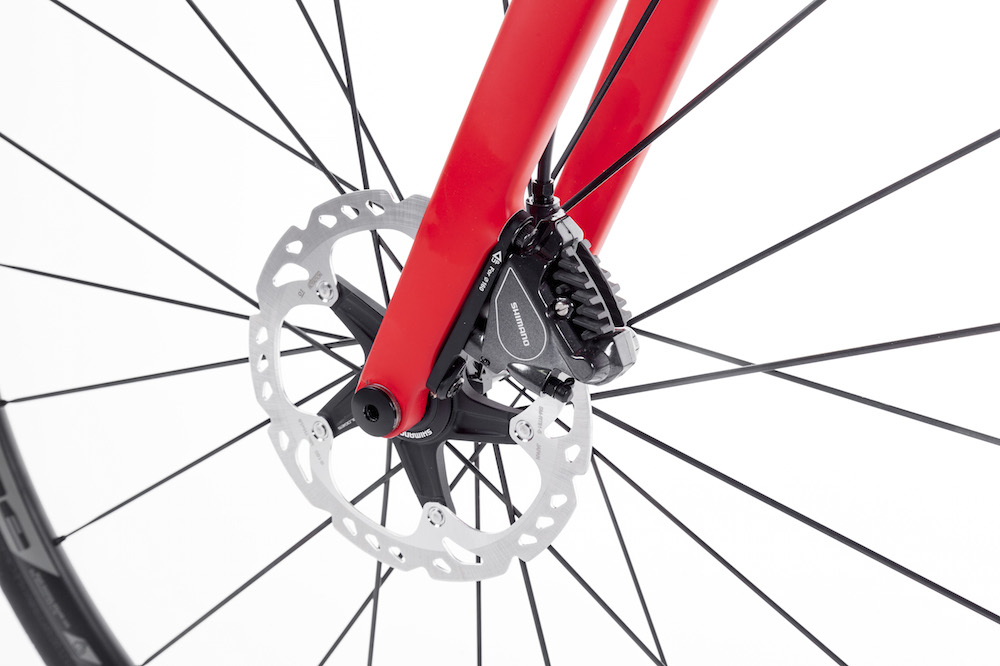
Disc brakes have become the standard over last few years. These very slightly increase the weight of the bike, but offer far superior stopping power, especially in the wet. At lower price points you'll still see a few a bikes with rim brakes, such as those featured in this guide. These needn't be overlooked, especially if you ride predominately in dry conditions. Do remember though that a rim brake frame can't be upgraded to run disc brakes. Tyre clearance will also likely be more restrictive.
Finally, women may want to look at female specific bikes. It's not essential that you do so, but women's bikes will come with narrower handlebars, a women's saddle and will be available in smaller size ranges. Bikes on the smaller end of the scale usually have shorter cranks too.
Having these components adjusted will generally make riding more enjoyable, and buying a ready built female specific bike does save you money spent buying these components after market. However, there's nothing stopping you buying a unisex frame and changing the handlebars and saddle yourself, so unisex models shouldn't be discounted.
Invest in the frame, or components, when spending under $1000?
This incredibly busy price point tends to contain two clearly distinct approaches. Some brands invest heavily in frame development, and spec the bike with 'ok' components, whilst others cover a cheaper frame dressed in higher end accessories.
The former provides you with a frame you can steadily upgrade as you go, but in the meantime you'll be stuck with slightly clunkier shifting and squishier brakes. The latter means that if you develop as a cyclist and want something a bit higher end, you're going to need to buy a whole new bike.
There is no right or wrong answer. However, if you're at the start of what you hope to be a flourishing cycling career, plan to become more and more expert, AND have a bit of mechanical know how, a higher end frame with lower spec components will last you longer.
What to expect: bikes between $500 and $750
Once you go over $500, two things happen. First, the big household name brands such as Giant, Specialized, Trek, Scott and Cannondale enter the market with their entry-level aluminium road bikes, which normally offer slightly less exotic groupsets and components, but tend to feature very well-engineered frames.
The second thing is that smaller specialist brands, such as Ribble, begin to offer very capable all-year bikes or winter training bikes, sometimes made of steel with excellent ride qualities. These machines may not have all the luxuries and speed of top-end models but do provide enough ride comfort and performance to satisfy even hardened, experienced road riders.
What to look for in road bikes between $500 and $750…
- A total weight of 9-10kg
- An aluminium frame with some design niceties such as internal cable routing, or even a mass-produced steel frame
- On big brand models expect Shimano Tiagra components; with specialist value brands expect anything up to Shimano 105 or SRAM Apex parts
- Possibly Shimano groupset brakes, or more likely Tektro calipers
- Own-brand wheels or Alex rims on aluminium hubs
- Own brand bar, stem and saddle
- Carbon fork
What to expect: bikes from $750 to $1,000
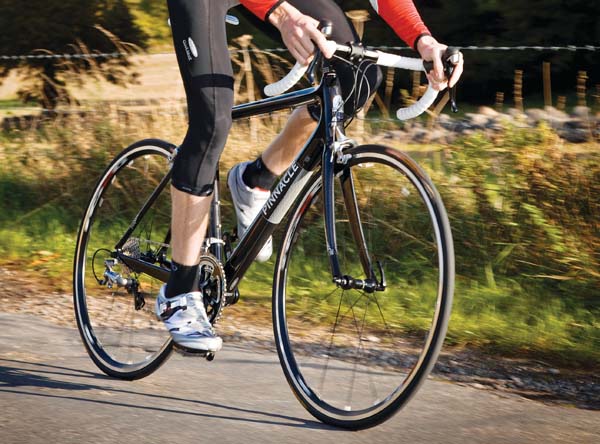
Pinnacle Evaporite Two bike
As we head towards the magic $1,000 mark, all bets are off. The dedicated bargain hunter can find almost any product in this price range, including carbon-fibre frames.
Be careful with carbon bikes sub-$1k, though — there are some good composite frames available, but there are also some shockers. Conversely, aluminium bikes at this price can be extraordinarily good, and may also come fitted with mid to upper-range gears and brakes. There is also a growing trend among manufacturers to fit mechanical disc brakes at this price point, too.
We’d recommend you really do your homework and read our tests. It’s not a case of general product quality — at this area of the market most bikes are very decent. However, there is the matter of specialisation. By the £1,000 point manufacturers have started to tailor their bikes to fulfil certain specific abilities. So whether you want an all-day comfort machine, or a speedy rocketship, almost any requirements can be filled. Just make sure you know what you want and pick wisely.
What to look for in a road bike between $750 and $1,000…
- A total weight of 9kg or possibly less
- A degree of model specialisation for particular ride criteria
- A top-quality aluminium frame with details such as internal cable routing, general tube manipulation, specific elements designed for comfort, strengthened bottom bracket for power delivery, tapered head tube for better handling
- Possibly even low-end carbon-fibre frame from specialist value brands (but be discerning when it comes to value carbon!)
- Mainly Shimano Tiagra, Sora or perhaps 105 components
- Matching groupset caliper brakes or mechanical disc brakes
- Lighter, own-brand wheels or respected third-party wheelsets
- Mainly own-brand bar, stem and saddle — occasionally a third-party saddle
- Carbon fork
How we test
We have a dedicated team of testers here at Cycling Weekly, whose job is to review a whole range of cycling products and to write objective reviews of their experience of using them day in day out in a whole range of conditions.
With huge experience, they're really well placed to compare products, identify their strengths and weaknesses and bring you an honest, unbiased assessment of how they perform.
When it comes to testing road bikes we log hundreds of miles, looking at a number of factors as we assess their overall performance. Of course we consider what the bike is primarily designed for, whether it's an aero race bike, a lightweight climber or an endurance model but also look at more general considerations such as build and spec quality, durability and value for money.
The latest race content, interviews, features, reviews and expert buying guides, direct to your inbox!
Michelle Arthurs-Brennan the Editor of Cycling Weekly website. An NCTJ qualified traditional journalist by trade, Michelle began her career working for local newspapers. She's worked within the cycling industry since 2012, and joined the Cycling Weekly team in 2017, having previously been Editor at Total Women's Cycling. Prior to welcoming her first daughter in 2022, Michelle raced on the road, track, and in time trials, and still rides as much as she can - albeit a fair proportion indoors, for now.
Michelle is on maternity leave from April 2025 until spring 2026.
